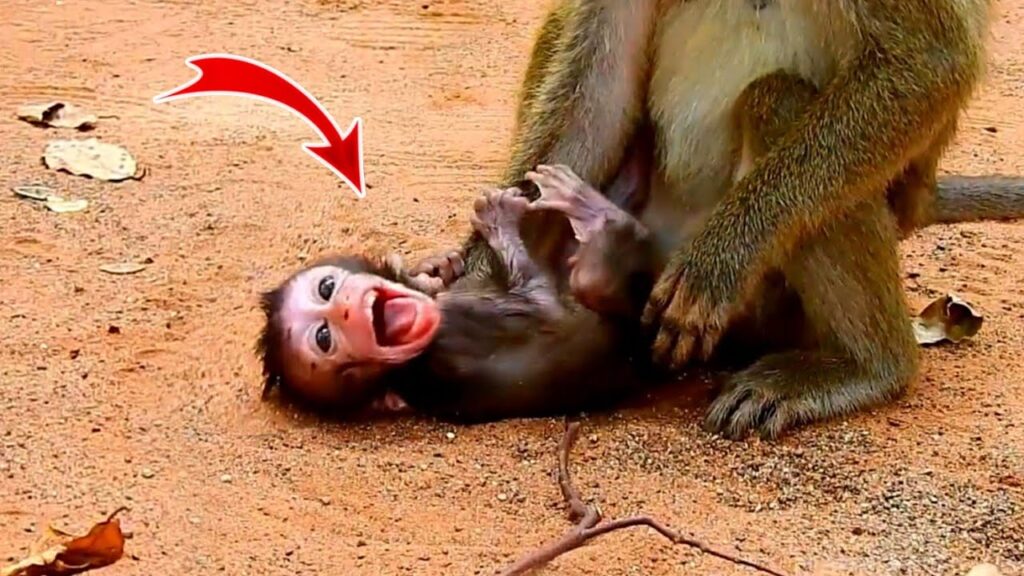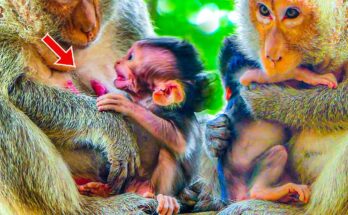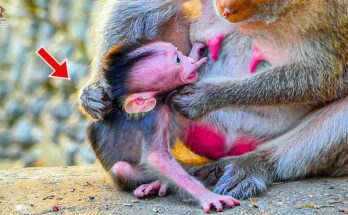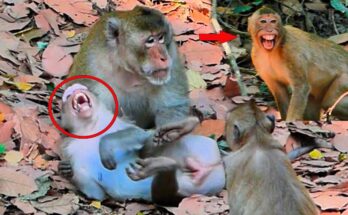
In the heart of the wild forest, the air is filled with an emotional sound that makes anyone who hears it stop and listen. A tiny macaque baby, lost and frightened, raises his voice in a desperate cry for his mother. His high-pitched screams echo across the trees, joining with the chorus of other wildlife sounds, yet standing out because of their raw emotion. It is the sound of survival, a million screams in one tiny body, as he calls again and again, hoping his mother will return.
The little macaque baby stumbles along the forest floor, still clumsy and weak. His small arms reach upward, searching for warmth and protection. Without his mother’s milk and comfort, every second feels longer and scarier. Around him, other monkeys swing and play, but his cries are different—filled with fear, hunger, and loneliness. Wildlife can be beautiful, but it can also be heartbreaking when such a fragile life faces danger alone.
Suddenly, the baby’s voice rises louder, almost breaking, as if the forest itself can feel his pain. Every scream is a plea for help, a hope that his mother will hear and come rushing back. The intensity of his tiny body shaking while he cries makes the scene even more emotional. The poor macaque baby does not stop; his million screams continue, proving his determination to survive.
For anyone watching, it is a reminder of how deeply bonded baby monkeys are to their mothers. Their cries are not just noise; they are messages of need, love, and fear. Real action in wildlife is not always about strength or fighting—it is about these tender, painful moments when a baby calls endlessly for the only comfort he knows: his mother.


